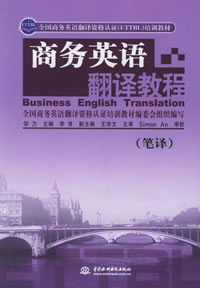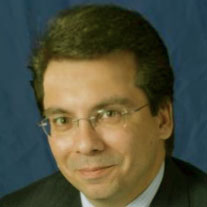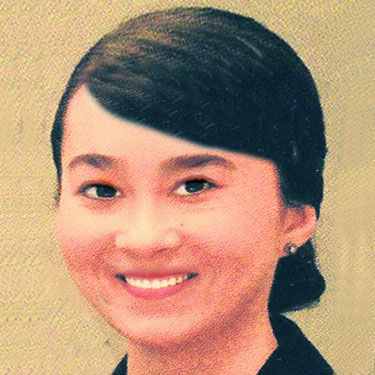书面翻译与口译培训核心步骤
作者:古龙 2009-07-04




语际翻译公司 转载请注明https://www.scientrans.com
∗本栏目部分文章内容来自互联网,部分已经过本站编辑和整理,如有版权事宜请联系Email/MSN jesczhao@hotmail.com
Essential Activities in Translator-Interpreter Training
The extremely fast pace of life, business and communications in our present world demands, more than ever before, the training of professionals in the field of translation and interpretation who are capable of successfully tackling a true mosaic of challenges in their linguistic and cultural endeavors, both in the field of written translation and in the field of interpreting or oral translation. It is not enough anymore to train a specialist by translating literary excerpts or hardly useful, outdated texts. It is of the essence to train specialists who can accurately translate and interpret in the fields of science and technology, health care, business, immigration, courts, media and other areas of great demand in today's fast-paced world. This article strives to illustrate what can be done in this respect, especially when it comes to training exercises and the creation of new translation-interpretation texts.
Introduction
Brief Outlook of the Needs in T-I and the Response of Our Institutions of Higher Education
In today's world, Translation and Interpretation (T-I) Studies have become a must. In Europe, for instance, these activities have been part and parcel of universities' offerings for centuries. However, it is in the past 60-70 years when a special emphasis was given to training specialists in these fields. The European Union has seen its membership increased to over 20 countries, with even more knocking at its door, and its Directorates for Translation and Interpretation have proved they were ready for the challenge1. The United States, in spite of its leadership in NAFTA and developing expansion of other Central and South American Free Trade Associations, are only now slowly recovering from decades of misconceptions (for instance, "everyone else must know English") and, to various extents, from having neglected productive foreign language studies and translators and interpreters' training.
For many years, and perhaps as a byproduct of behaviorism, T-I activities in the US were unofficially banned from language teaching and learning. If and when translation courses were scheduled in a few colleges and universities, they often consisted of a short "literary" translation offering, without any foundation on or practice of general translation in fields of increasing importance such as health services, the law, social services, or the movie industry.
As it happens today in the U.S., there are only a few universities and colleges that offer T-I training. Although this situation is starting to change for the better, so far there exist just a handful of specialized—and often very expensive—programs that cater to graduates, fully bilingual individuals or already practicing translators-interpreters, thus elegantly sidestepping the tough responsibility of training undergraduates in the T-I field. The quality of said programs is praiseworthy, but, due to their own established goals, tuition and requirements, their reach and scope are limited.
As a higher education professor, this author had the opportunity to teach T-I courses, together with an occasional Theory of Translation course, first at the College of Foreign Languages in Havana, Cuba for several years, then at the University of Havana, T-I specialty, and at the University of Guyana, South America. More experience in this field was gained at Moscow Linguistic University and as a Cuban international interpreter in the combination English-Spanish. In the U.S. this author has conducted T-I teaching at UNE, at UNCO and for several T-I organizations and events.
In the U.S., the University of Nebraska had the privilege and the challenge of offering a T-I program for over two decades. This program started by offering basic general translation, a bit of literary translation and a bit of interpretation from Spanish and French and into English. However, no translation or interpretation into the foreign language in question, or very little, was implemented for a while. As a result, the very few graduates from this program, with rare exceptions, could mostly translate and interpret into English, but not always the other way around. It became thus imperative to overhaul this program and bring it up to contemporary times, in order to meet the current needs for T-I in the U.S.
Meeting the Challenge
For eleven semesters and several summer courses -August 2001-December 2006-the UNE T-I pro
- 评论
- seme:文章内容文章内容文章内容文章内容文章内容文章内容文章内容文章内容文章内容 章内容文章内容文章内容文章内容文章内容
- seme:文章内容文章内容文章内容文章内容文章内容文章内容文章内容文章内容文章内容 章内容文章内容文章内容文章内容文章内容

- 日常生活中常用的英语五星级句子
2009-7-11 23:00:38 - 熟练地运用英语的一个重要方面就是学习并掌握英语本族者常用的生动、的活泼的习语。 1. After you.你先请。这是一句很常用的客套话,在进/出门,上车得场合你都可以表现一下。好象现在女士不愿意你这么做,特别是那些女权主义者,我还记得这么一段话:一个女士对...
- 英语中各种数字的读法
2009-7-11 22:59:44 - (1)年号的读法: 1979←→nineteen seventy-nine or nineteen hundred(and) seventy-nine; (2)电话号码、货币的读法: 1023←→one o two three;1227←→one dou...
- 第四届IEEE生物信息与生…
2009-6-30 19:42:01 - 基本信息 主办单位: 四川大学,IEEE生物医学工程协会(EMBS) 承办单位 开始日期 2010/06/18 结束日期 截稿日期 2009/1...
- 第九届全国光电技术学术…
2009-6-30 19:35:58 - 基本信息主办单位: 中国宇航学会光电技术专业委员会承办单位 开始日期 2009/11/01结束日期 截稿日期 2009...
















